Cerebral infarction and cavernous cerebral infarction, are they the same?
In every day clinical work, not only neurologists, I guess as long as you are a doctor, you will be asked one type of question frequently, which is: "Cavernous cerebral infarction and cerebral infarction, is it the same? What's the difference?" The reason for this is that CT is used more often in hospitals at all levels, and the number of lacunar cerebral infarctions that are detected has increased compared to before. So, what are the differences between lacunar cerebral infarction and cerebral infarction?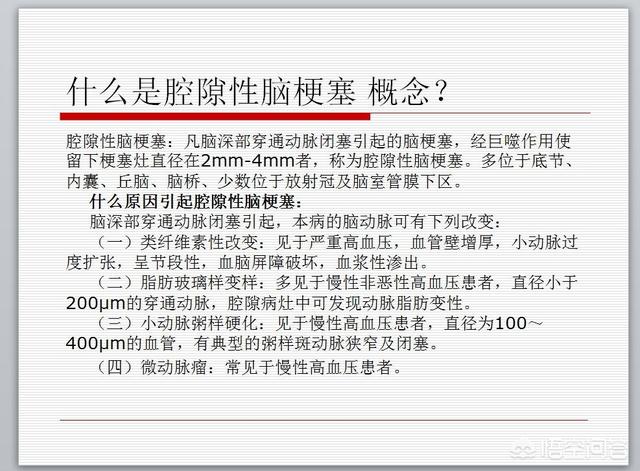
Objectively speaking, cavernous cerebral infarction has a lot of similarities compared with ordinary cerebral infarction, but there are still a lot of differences. To summarize, the differences come from three aspects: the pathological basis is different, the size is different, and the harm is different.
1. Pathological basis
When it comes to pathological basis, the pathological basis of common cerebral infarction is atherosclerosis, of course, there are some cerebral infarction caused by atrial fibrillation. The pathological basis of lacunar cerebral infarction is the degeneration, swelling and hardening of small arterial walls brought about by long-term high blood pressure that is not effectively controlled to the point that occlusion finally occurs.
2. Size
In layman's terms, a common cerebral infarction with a large infarct size can be expressed as a watermelon. While lacunar cerebral infarction infarction area is smaller, can be expressed as sesame seeds. Of course, this is not rigorous, but easy to understand.
3. Hazards
Ordinary cerebral infarction often causes severe symptoms such as poor limb movement, poor speech, etc., and can be fatal if the infarction is in the center of life. However, most of the patients with lacunar cerebral infarction do not have any symptoms after the occurrence of the infarction, and only a few patients may have obvious symptoms. This is why many patients with lacunar cerebral infarction often discover the lesion after a physical examination and a CT scan, but they do not perceive any symptoms.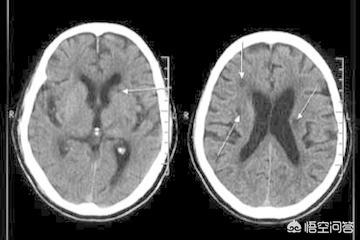
In conclusion, cavernous cerebral infarcts and cerebral infarcts are similar, but not identical.

[Professional doctor to answer your questions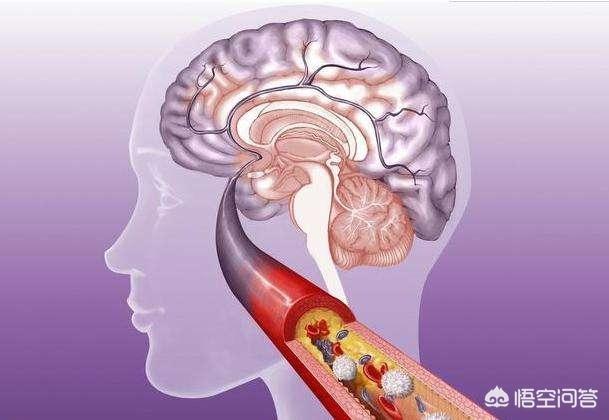 There are similarities and differences between the two. The similarity lies in the fact that both are caused by cerebrovascular infarction, so the cause is the same; the difference lies in the fact that the location of the blood vessels in which the two lesions occur is different, which simply means that the consequences are different, how to understand it?
There are similarities and differences between the two. The similarity lies in the fact that both are caused by cerebrovascular infarction, so the cause is the same; the difference lies in the fact that the location of the blood vessels in which the two lesions occur is different, which simply means that the consequences are different, how to understand it?
The brain is the center of human life, there are a large number of brain nerve cells, and divided into different functional areas, the cerebral blood vessels bear the important responsibility of transporting oxygen and nutrients for these brain nerve cells. Cerebral blood vessels are crisscrossed with small and medium-sized blood vessels branching off from large blood vessels, and eventually tiny blood vessels, which are interspersed around the brain nerve cells.
When these blood vessels become diseased, such as by high blood pressure, high blood sugar and other damages occur atherosclerosis, so that the diameter of the blood vessel thickening, lumen narrowing, or even plaque formation blockage of blood vessels, blood flow will be blocked or interrupted for the blood supply of blood for the surrounding brain nerve cells and other oxygen supply is interrupted, the normal physiological activities of the brain nerve cells can not be carried out, or even damaged and dead, the normal life of the human body that will be affected by the activities. The normal life activities of the human body will be affected. This condition can occur in different functional areas of the brain, and the consequences will be different.
When the blockage of cerebral blood vessels occurs in the tiny small blood vessels, it will only cause insufficient blood supply or lack of blood supply to a very small area, which may only cause damage to the interstitial space between the brain nerve cells, and the brain nerve cells have not yet been damaged or the damage is very mild, and often there will not be obvious symptoms, which means that cavernous cerebral infarction has occurred. If the larger blood vessels in the brain are blocked, the area of ischemia and hypoxia is larger, more nerve cells in the brain are damaged or dead, and the physiological activities governed by them will be affected, for example, loss of motor function of the limbs will be hemiplegia when the blood vessels in the motor center are blocked, and patients in the language center will have aphasia, slurred speech, etc., which is commonly known as cerebral infarction.
From this, it can be seen that no matter what kind of brain infarction occurs, it indicates the occurrence of vascular lesions. Usually, lacunar brain infarction occurs earlier, and if it is not treated with interventions, the infarction will be further aggravated until it causes real brain infarction, which will be life-threatening. Therefore, lacunar infarction can be regarded as an early warning of cerebral infarction, and intervention treatment is necessary. The main measure is to remove the factors that cause the development of atherosclerosis and plaque formation, such as strict control of blood pressure, blood glucose, blood lipids, a reasonable diet, adherence to exercise, abstaining from smoking and alcohol, and living a regular life, and so on.
It should be reminded that although lacunar infarcts do not cause obvious symptoms in most cases, studies have shown that lacunar infarcts can affect patients' cognitive functions, such as memory and comprehension, five years after the occurrence of lacunar infarcts, especially in the occurrence of Alzheimer's disease, and need to be taken seriously.
I hope this answer can help you, welcome to click on the attention and leave a message, together to learn and exchange more health knowledge.
What we used to call "cerebral infarction" is now called "cerebral infarction".
Cavernous cerebral infarction refers to the lesion of the wall of the tiny arteries in the brain, the lumen of which is occluded, leading to necrosis of the smaller area of brain tissue under its control, thus forming a small infarction foci, usually with a diameter of no more than 5 mm. the symptoms of the patient are related to the location and size of the infarction, and the common symptoms include dizziness and headache, numbness of the limbs and vertigo, etc., and some of them may not have any symptom but are found during the physical examination of the craniocerebral CT or MRI. Some of them may not have any symptoms, but are found during physical examination of the skull and brain, such as CT or nuclear magnetic resonance imaging. The cause of infarction is closely related to underlying diseases such as hypertension and hyperlipidemia, and adverse lifestyle factors such as smoking and alcohol consumption, and is more common in the elderly.
Cavernous cerebral infarction is not fatal in most cases because it is a blockage of a small artery, but it is often a prelude to a blockage of a large blood vessel, because cavernous cerebral infarction indicates that endothelial damage has occurred in the arteries of the brain, and if not intervened in a timely manner, there may be serious consequences.
Cerebral infarction (also known as ischemic stroke) refers to all narrowing and occlusion of cerebral arteries, resulting in cerebral ischemia and hypoxia, which leads to limited ischemic necrosis or softening of brain tissues, and occlusion of large blood vessels can lead to large cerebral infarctions, which can result in hemiplegia, hemiplegic sensory deficits, or even the formation of cerebral herniation, coma, or in severe cases, directly lead to death.
Acute cerebral infarction is a very common clinical cerebrovascular disease, with a high mortality and disability rate, the difference between it and cavernous cerebral infarction is mainly due to the size of the blocked blood vessel, usually said cerebral infarction refers to the blockage of the larger arteries of the cranial brain, resulting in the softening of the brain tissue necrosis.
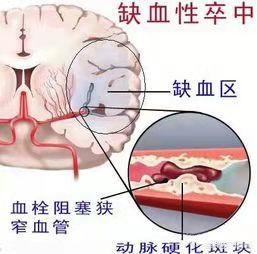
I am a surgeon who works with elderly patients with lacunar cerebral infarctions on a regular basis. Elderly people who need to refine their preoperative workup because of surgery have a number of descriptions of their frequentDizziness, headache, vertigo, we will arrange for the elderly to have their brains examined, which often reveals cavernous cerebral infarcts in this case.
Patients with lacunar cerebral infarction often do not have very obvious symptoms, and many elderly people will think that they are old and do not rest well to experience dizziness, so they will not pay much attention to it.
Cavernous cerebral infarction is actually a type of cerebral infarction, and there are other common types of cerebral infarction:Thrombosis, cerebral embolism。
Cavernous cerebral infarction differs from other types of cerebral infarction in thatThe clogged cerebral arteries are different②Areas of brain ischemia vary in size③Symptoms vary④The causes of the disease are different。
cavernous cerebral infarction
Cavernous cerebral infarction is caused by a blood vessel blockage that occurs due to lesions in the small arteries deep in the brain, because the area of the brain supplied by the small arteries is relatively small, so the area of cerebral infarction is also small. It is usually located in the2mm-5mmBetween, maximum onHalf the size of a fingernail.。
Because it is a blockage of small, deep arteries, lacunar cerebral infarction lesions are scattered in the center of the brain, like the seeds of a cantaloupe concentrated in the melon.
👆 Cavernous brain infarct lesions are small and only easily recognized by specialists, with multiple lesions in the middle of the MRI brain section
Common symptoms of lacunar cerebral infarction are:Dizziness, headache, numbness of limbs, vertigo, memory loss, slowness, mental declineAnd so on. So if you think an elderly person is starting to get a little demented and forgetful, be on the lookout for a lacunar cerebral infarction.
The occurrence of lacunar cerebral infarction is mostly related to unstable control of hypertension. The blood vessels of elderly hypertensive patients are damaged and hardened by fluctuations in blood pressure and are highly susceptible to obstruction.
Cerebral thrombosis, cerebral embolism
A cerebral thrombosis is a blood clot in an artery that supplies blood to the brain.original positionformedAtherosclerotic plaques.A cerebral embolism is an "embolism" from somewhere else, such as from atrial fibrillation.heart thrombosisInto the brain, air enters the cerebral blood vessels to formairlock、droneBolt,monstrosityBolts and so on.
Most of these emboli block larger arteries causing cerebral infarcts, with the infarcts concentrated on one side of the brain and the infarcts somewhat larger in scope.
Common symptoms are characterized byabrupt collapse、hemiplegia、verbal mental retardationThe predominant. The cause of morbidity is mostlyatherosclerosis、arrhythmiaThe underlying disease is oftenhigh blood pressure、heart attack、diabetes。
👆 Cerebral infarction often presents with hemiparesis: crooked mouth, hemiplegia ......
There are also differences in treatment between the two
Cavernous cerebral infarction is mostly treated symptomatically with rehabilitation exercises and dietary modifications tolow-fat、low calorie (foodstuff)、low-salt dietMainly.
A cerebral infarction requires opening the blocked blood vessel as soon as possible to preserve as much limb function as possible, includingmelting pot、anticoagulationand other treatments. Follow @Dr. Luo Health Talk to gain more authoritative health science and read more touching stories. Welcome to retweet, comment, like, recommend me to your family and friends. You can also private message me to exchange more health topics together.
Follow @Dr. Luo Health Talk to gain more authoritative health science and read more touching stories. Welcome to retweet, comment, like, recommend me to your family and friends. You can also private message me to exchange more health topics together.
Dr. Kami Kamuchi;
Answers are for informational purposes only;
Feel free to follow and leave a comment!
It's essentially "the same thing"!
- Cavernous cerebral infarcts are included in cerebral infarcts!
- That is, cavernous brain infarcts are a part or class of cerebral infarcts!
What's the difference?
Cerebral infarction: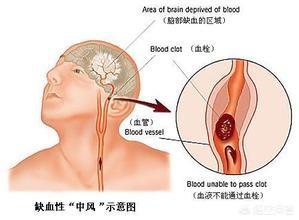
It refers to ischemic-anoxic necrosis of brain tissue, and all types and causes of ischemic-anoxic necrosis of brain tissue can be called "cerebral infarction"!
Cavernous brain infarcts: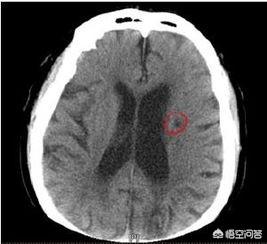
The so-called "cavernous" is actually a limitation on the size of the brain infarction lesion, mostly refers to the lesion less than 1.5-2.0cm infarction, most often due to penetrating vascular lesions! Clinical symptoms are relatively mild, and the cause is mostly related to hypertension!
Overall:
- Cerebral infarction encompassing lacunar cerebral infarction!
- Cavernous brain infarcts are part or a type of cerebral infarction!
I hope my answer is helpful to you!
What is a cerebral infarction?
Cerebral infarction is a general term for ischemic stroke, which is a condition of necrosis and softening of brain tissue due to ischemia and hypoxia in the blood-supplying area of brain tissue as a result of a sudden reduction or cessation of blood flow in the local blood-supplying artery of brain tissue, accompanied by clinical symptoms and signs in the corresponding area, such as hemiparesis, aphasia, and other neurological deficits.
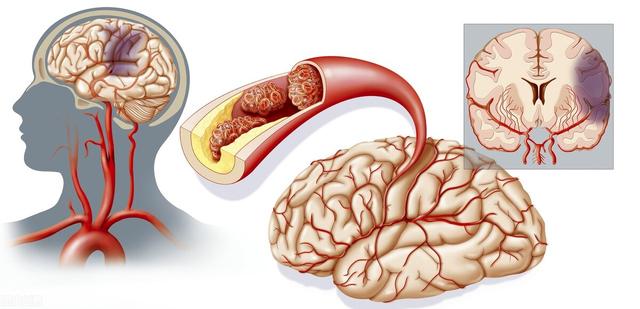
Cerebral infarction is a brain lesion caused by a disorder of cerebral blood supply, including cerebral thrombosis, cerebral embolism, cavernous cerebral infarction and transient ischemic attack, which accounts for about 70% of strokes.
Twenty-four to 48 hours after the onset of cerebral infarction, brain CT scan can see the corresponding part of the low-density foci, the boundary is not clear, and there may be some occupying effect. Brain magnetic resonance (MRI) examination can detect cerebral infarction at an earlier stage, which is manifested as low signal of T1 in the lesion area and high signal of T2 on weighted images, and MRI can detect smaller infarction foci.
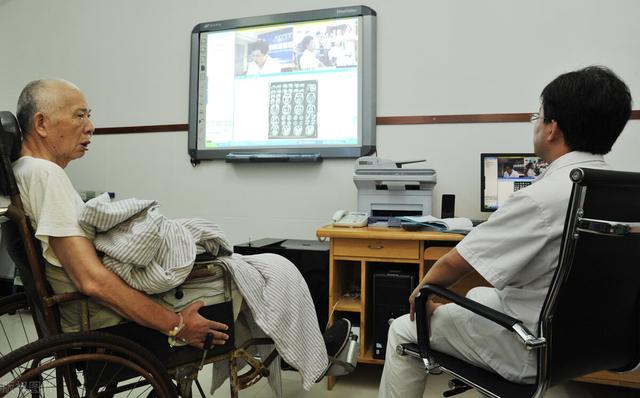
What is a lacunar cerebral infarction?
Cavernous cerebral infarction is one of the common cerebrovascular diseases, a special type of cerebrovascular disease caused by persistent hypertension and small arteriosclerosis, which is a microinfarction due to occlusion of deep penetrating branches with a diameter of 100 to 400 μm. In the late stage, there are small cystic cavities left behind due to the removal of necrotic tissues in the tiny softened foci, thus called cavernous cerebral infarction.
It is named after the pathologic diagnosis and is a general term for fresh or old small deep brain infarcts. The most common sites are the basal ganglia and the base of the pons, and the frequency of occurrence is the nucleus accumbens, the caudate nucleus, the thalamus, the pons, the internal capsule, and the white matter of the brain, while the cerebral cortex and the cerebellar cortex do not occur.
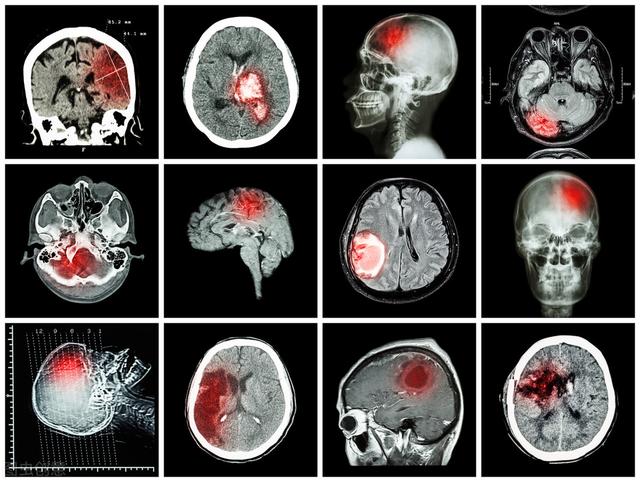
What are the common causes of lacunar cerebral infarction?
The etiology of the disease is not fully understood. Factors associated with the etiology are:
① The most common cause of luminal lesions is hypertension resulting in lipohyalinosis of the walls of small arteries and microarterioles and lumen occlusion. It has been suggested that there is no significant correlation between single luminal lesions and hypertension, and that increased diastolic blood pressure is the main cause of multiple luminal infarcts.
② Atherosclerosis of the middle cerebral and basilar arteries and the formation of small thrombi that obstruct deep penetrating arteries can lead to lacunar infarction.
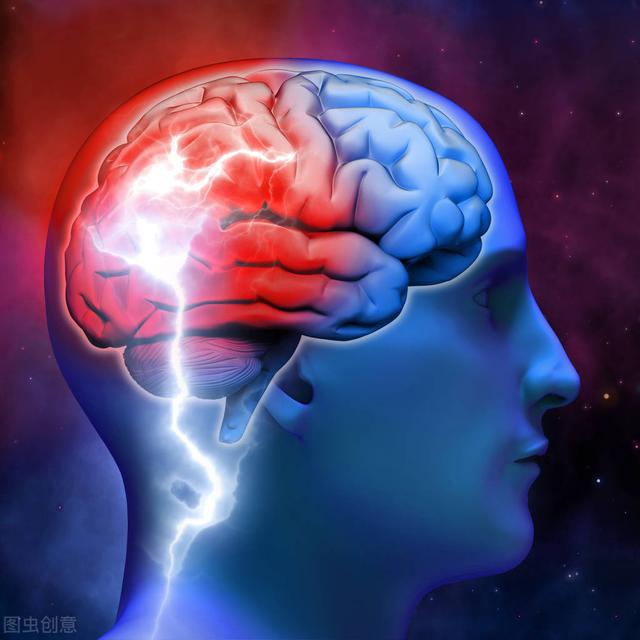
(iii) Hemodynamic abnormalities, such as a sudden drop in blood pressure that significantly reduces distal blood flow in an already severely narrowed artery, and the formation of a tiny infarct.
④ Various types of small emboli such as red blood cells, fibrin, cholesterol, air, and atherosclerotic plaques obstruct small arteries; emboli have been reported to be found in retinal arteries and small cerebral arteries; dislodged atherosclerotic plaques from the extracranial segments of the carotid arterial system are the most common source of microemboli, and cardiac disease and fungal aneurysms are also possible sources of emboli.
⑤ Blood abnormalities such as erythrocytosis, thrombocytosis, and hypercoagulability may also play a role in pathogenesis.
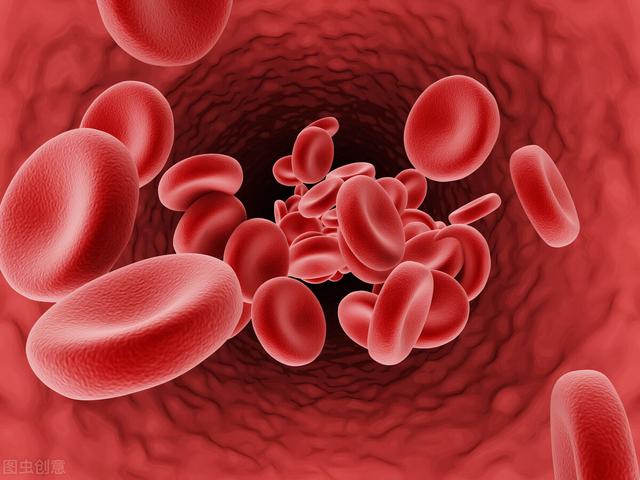
What are the clinical manifestations of lacunar cerebral infarction?
The clinical manifestations of cavernous cerebral infarction depend on the location of the cavernous space, and the following four types are more specific in clinical manifestations:
(1) Simple movement disorders:This type is the most common (about 2/3 of cases). It produces mild hemiparesis with aphasia, sensory deficits, or visual field defects, more often in the upper limbs than in the lower limbs, or predominantly with facial muscle and upper limb involvement, occasionally with contralateral supranuclear facial palsy. The lesions are mostly in the contralateral internal capsule or pons. In addition, this type can show different variant symptoms clinically.
(2) Dysarthria-hand clumsiness syndrome:It accounts for about 20% of cases. The manifestations are central facial paresis and lingual paresis, accompanied by slurred speech, regurgitation of swallowing, lack of fine hand movements, lack of stabilization of the finger-nose test, and, in some cases, cone-bundle signs. The lesion is located in the middle and upper 1/3 of the basal part of the pontine bridge, or the uppermost part of the internal capsule, or the knee.

(3) Simple sensory impairment:About 10% of the cases. The main manifestations are sensory impairment of one side of the face and half of the body, without hemiplegic aphasia and visual field defects; or sensory impairment first appeared in one part of the body, and then developed to the whole face, the whole limb or the whole half of the body in a short time, the nature of the sensation is numbness, heat, pins and needles, burning, heaviness, pulling and other sensations, and its subjective sensation is often greater than the objective examination; there may be symptoms of transient ischemic attack, and the focus of the disease is in the contralateral thalamus posterior posterior posterolateral nucleus.
(4) Ataxic hemiplegia:Ataxia and weakness of the lower limbs more than the upper limbs, with pyramidal signs, have ataxia that cannot be fully explained by weakness. The lesions are mostly in the contralateral radial crown to the internal capsule or in the cortical brainstem bundle pathway at the base of the pontine bridges.

Cerebral infarction is also known as ischemic stroke, which includes several types of cerebral ischemic diseases, such as lacunar cerebral infarction, cerebral thrombosis and cerebral embolism, etc. That is to say, lacunar cerebral infarction is only a classification under cerebral infarction;
In general, lacunar cerebral infarction has the following characteristics compared to other types of ischemic stroke:
1, the symptoms are mild: most of the lacunar cerebral infarction in the onset of no relevant symptoms, occasionally there will be a small number of patients can be manifested as some relatively mild symptoms, and the prognosis is better, such as dizziness, headache, numbness of the limbs, slow reaction and so on;
2、Small infarct area: the area of lacunar cerebral infarction is relatively small, and its diameter is generally between 2 and 15mm, and its maximum limit is only 20mm;
3, predisposing factors for hypertension: hypertension symptoms in a fairly long period of time has not been good control, it will lead to cerebral hemispheres or brain stem deep small penetrating arteries hardening, over time, these small arteries will slowly occlusion, the formation of smaller infarction foci, that is, lacunar cerebral infarction.
Cavernous cerebral infarction and cerebral infarction are essentially the same, with only a difference in degree. Cavernous cerebral infarction accounts for 20% to 30% of all cerebral infarctions.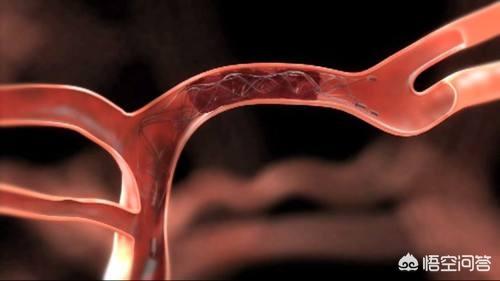
Cavernous cerebral infarction, refers to the small penetrating arteries of the brain tissue in the role of long-term hypertension, hyperlipidemia, diabetes and other risk factors, the vascular wall lesions, and ultimately the lumen occlusion, resulting in ischemic and anoxic necrosis of the distal brain tissue, necrotic brain cells by phagocytosis, removal, the formation of a small cavity, and therefore we call the cavernous cerebral infarction, the infarct foci of the size of the foci is generally not more than 1.5 to 2cm.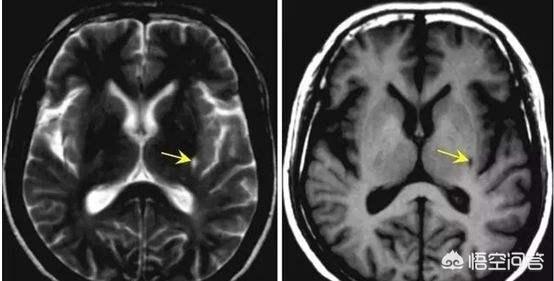
Since the infarcts are small and most of the patients have infarcts in relatively quiet areas of the brain tissue (non-functioning), patients with lacunar cerebral infarction usually have no symptoms of neurological deficits, which is also known as the "healthy state" of the common people. Therefore, patients with lacunar cerebral infarction usually have no symptoms of neurological deficits, which is the so-called "healthy state".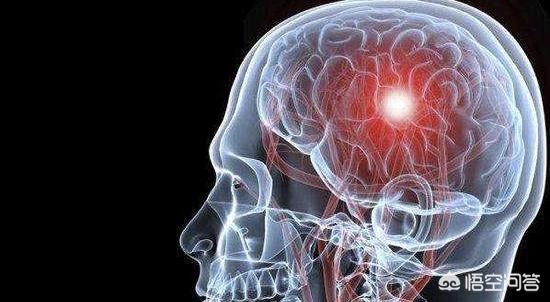
But cavernous cerebral infarction is by no means a harmless diseaseThe reason why lacunar cerebral infarction occurs, the patient must have one or more risk factors for cerebral infarction, such as hyperlipidemia, hypertension, diabetes mellitus, heavy smoking, alcoholism and so on. When you find that the CT report card says lacunar cerebral infarction, you must self-check the above risk factors and intervene as early as possible, otherwise, the next step is likely to be massive cerebral infarction!
Dr. Zhang Online - Welcome to your attention!
Thanks for the invitation!
Often patients come to the doctor with tablets and ask, "Doctor, it says on my tablets that I have lacunar cerebral infarction, but I don't even feel any uncomfortable symptoms, and don't cerebral infarctions have symptoms such as headache and vomiting? Isn't this a misdiagnosis?"
In fact, these are two different diseases, and the symptoms are certainly not the same! Many people see cerebral infarction in lacunar cerebral infarction, and automatically bring it into cerebral infarction, this is the misunderstanding of lacunar cerebral infarction, here we talk about the difference between the two.
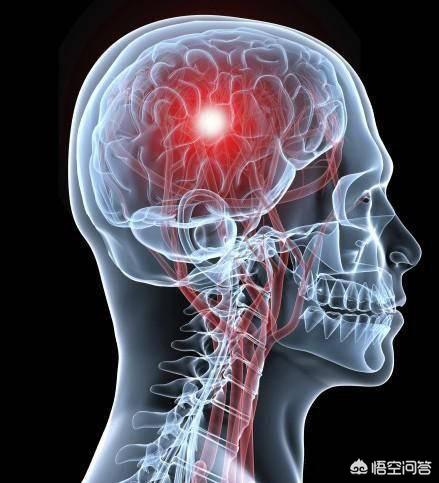
First, the definitions are different
Cerebral infarction is a localized ischemic and hypoxic infarction of brain tissue caused by occlusion of large intracranial and extracranial arteries;
Cavernous cerebral infarction is a punctate infarction of brain tissue caused by occlusion of small arteries deep in the brain or brainstem.
The former are large arteries and extensive infarcts, while the latter are small arteries and small infarcts.
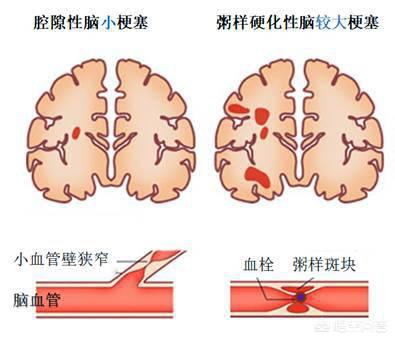
Second, the cause of the disease is different
Cerebral infarction is most often caused by atherosclerosis;
Cavernous cerebral infarcts occur most often in chronic hypertension.
Third, the symptoms are different
A cerebral infarction can have severe symptoms such as headaches, vomiting, hemiplegia, and hemiparesis;
Cavernous cerebral infarction symptoms are mild or even asymptomatic, often with symptoms such as dizziness and forgetfulness. Because the lesion is deep and small, it may be located in an unimportant or unaffected area, called a "dumb zone".
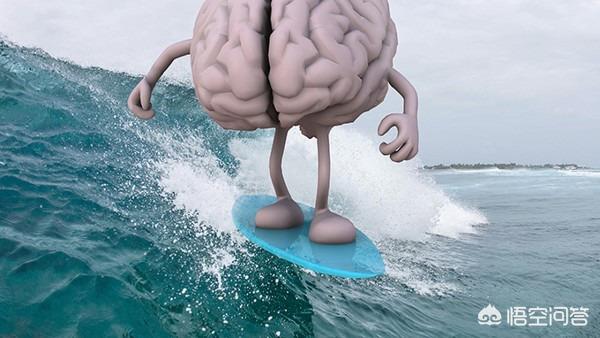
Fourth, the mode of onset is different
Cerebral infarction often starts acutely, with many symptoms appearing at once, and the situation is urgent;
Cavernous cerebral infarction is the opposite of this, it tends to aggravate slowly, similar to a chronic disease, but you should not underestimate it, if you let it go, it may lead to vascular dementia, Parkinson's-like syndrome, urinary incontinence and other consequences.
Fifth, the prognosis varies greatly
Cerebral infarction, because of its rapid onset and large infarction, usually has a poor prognosis and is prone to disability and death;
This is not the case with lacunar cerebral infarction, which has a very good prognosis and basically leaves no sequelae.
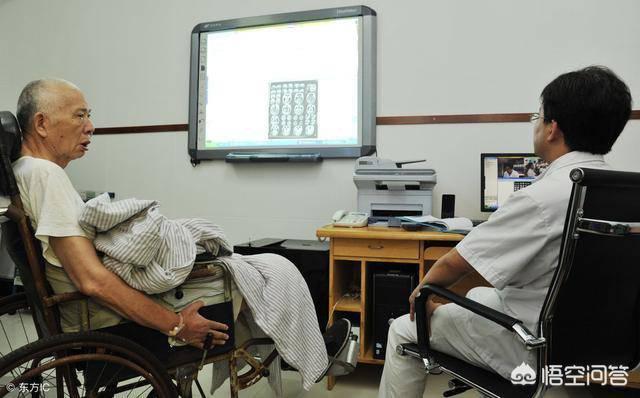
With the enhancement of public health awareness and the development of screening technology, many diseases that were not so easy to be found before can now be found, many patients are found in the physical examination of their own cavernous cerebral infarction, a look at all the cavernous cerebral infarction in the cerebral infarction, everyone panicked!
Dr. Cai told people that there is no need to panic, the disease is not scary, take the report when you see it and go to a neurologist, who will treat you properly and the prognosis is very good.
Thank you! Cerebral infarction and cavernous cerebral infarction are not the same when broken down, they can be the same when roughly divided.
Actually, cerebral infarction's is a broad name that encompasses cavernous cerebral infarction.
And lacunar cerebral infarction is actually a very small cerebral infarction, because lacunar means very small, so for some very mild, clinical symptoms are not serious cerebral infarction, basically can be called lacunar cerebral infarction.
Cerebral infarction, on the other hand, is a large category of names, not only cavernous cerebral infarction, but also multiple cerebral infarction, large cerebral infarction and various other names.
Therefore, in this case, it is necessary to improve the relevant examination to finally identify, such as head CT, head nuclear magnetic.
And must do cerebral angiography test to clarify their own blood vessels specific whether there is a problem, if there is a problem with the blood vessels, then also need to follow up actively related to the treatment, in special circumstances, but also to carry out surgery.
Blessings to all of you for good health!
If you have any questions you can chat privately to get the method of asking for a consultation. Welcome to like, comment, retweet, attention, take you to understand the real world of neurosurgery (brain surgery). (For reasonable and legal treatment of diseases, please choose the regular channels)
This question and answer are from the site users, does not represent the position of the site, such as infringement, please contact the administrator to delete.